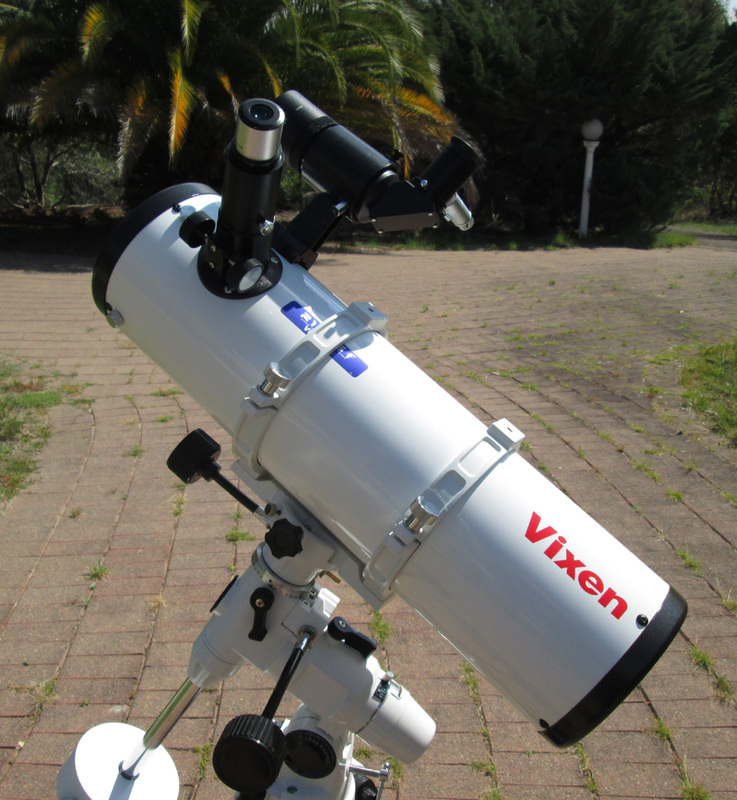Vixen R130sf 5 inch f/5 Newtonian
|
|
This 'scope was quite a surprise!. Thinking that two grandchildren were old enough and responsible enough to operate their own telescope the R130sf was bought for them as being a reasonable starter 'scope. Sadly the intention to hand this 'scope over to them proved to be premature and some time will have to pass before that dream can be realised. But in the meantime I have the use of this 'scope and it has become quite a favourite. It will be hard to part with it when the day comes.
Although made in China and costing really very little money this little 'scope punches well above its weight both in terms of optical excellence and fit and finish. The only complaint that I could possibly make is the rather poor quality of the supplied 30mm finder (but see below ***). But that was easily fixed by the substitution of a decent right angled illuminated reticle finder. One might quibble that the focuser is made from plastic but in practice it does its job and I have found no image shift when racking the focuser in and out using the supplied excellent 20mm and 6mm Plossl eyepieces. Adding the weight of a sturdy barlow made no difference. *** Only some two years after buying this 'scope did I realise that what I had thought was a badly adjusted fixed focus finder is not in fact the case. After discovering that the focus can be adjusted I now acknowledge that the finder works very well and I owe Vixen an apology for the unwarranted slur. The primary mirror is centre-spotted which makes collimating a quick and easy process using a laser collimator. At a focal ratio of f/5 this is quite a "fast" 'scope and the 20mm eyepiece delivers a field of view (FOV) of 1.6 degrees. With a spare 26mm Super Plossl eyepiece the FOV increases to 2.1 degrees. I can honestly say that this little scope has afforded me the best wide-field view of the Eta Carinae nebula that I have ever experienced. At the other end of the scale the supplied 6mm eyepiece combined with a 1.8 barlow lens gives a FOV of just under a quarter of a degree. At that magnification (x225) the 'scope still delivers sharp views revealling very fine features on the Moon's surface. Were it not for the grandchildren this 'scope would be a keeper. |

